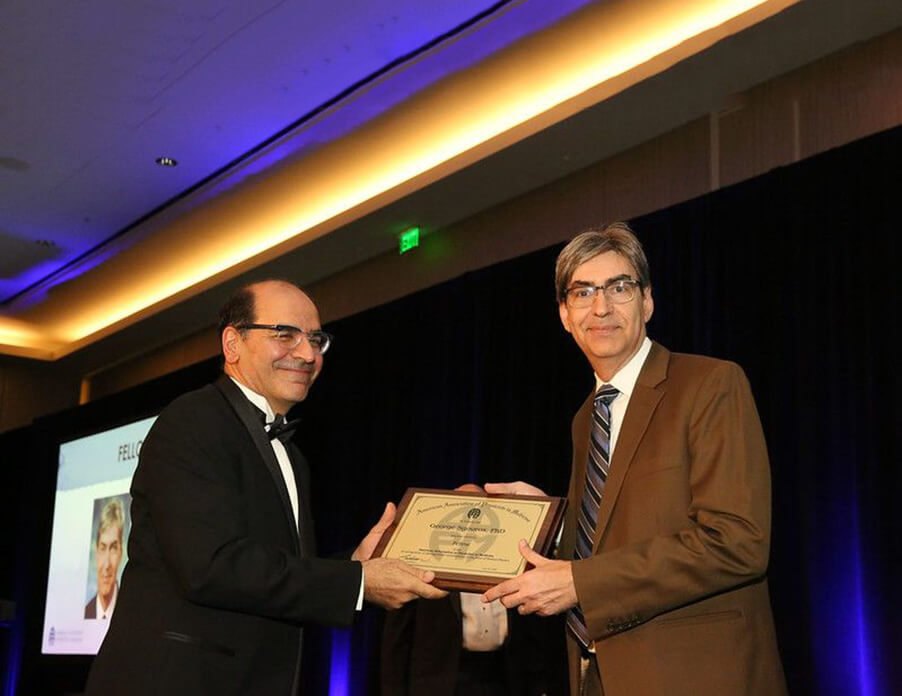George Sgouros Recognized for Contribution to Medical Physics

George Sgouros
George Sgouros has always believed in radiopharmaceutical therapy.
A pioneer in the field, Sgouros is a professor of radiology at Johns Hopkins, where he also serves as director of the Radiological Physics Division.
In recent years, research into radiopharmaceutical therapy (RPT) has exploded as researchers develop ways to destroy malignant cells using targeted delivery of radiation. Sgouros has dedicated his nearly 40-year career to the imaging and dosimetry physics that make RPT possible.
In recognition of his contributions to the field, Sgouros was recently named a fellow of the American Association of Physicists in Medicine. He was inducted during an awards ceremony held in Houston in July.
RPT shows promise for patients whose cancer has already spread. Once cancer is metastatic, a patient’s treatment options are reduced and become more systemic.
Traditional treatment options, like chemotherapy, are not targeted and may destroy healthy cells as well. Even when treatment is effective, patients may suffer severe side effects.
RPT involves placing a radioactive isotope into a targeting molecule. Researchers then inject the drug into the patient. Over time, the radiation leaves healthy tissue, but it sticks with the cancer cells, eradicating them.
RPT is an improvement over traditional treatments in that it is more targeted with fewer side effects. The FDA has approved three radiopharmaceuticals, though more will come.
Sgouros’ lab focuses on calculating the dosages of radiation needed for RPT. It is exacting work — and critical, as each treatment is tailored specifically to each individual patient to ensure maximum benefit and minimal side effects.
For Sgouros, it is gratifying to see RPT gain popularity and to see his decades of work built upon in the race to find new and better treatments for cancer.
“This is what I believe in,” he explained, concluding, “This modality is going to make a difference to cancer patients that have run out of treatment options".
